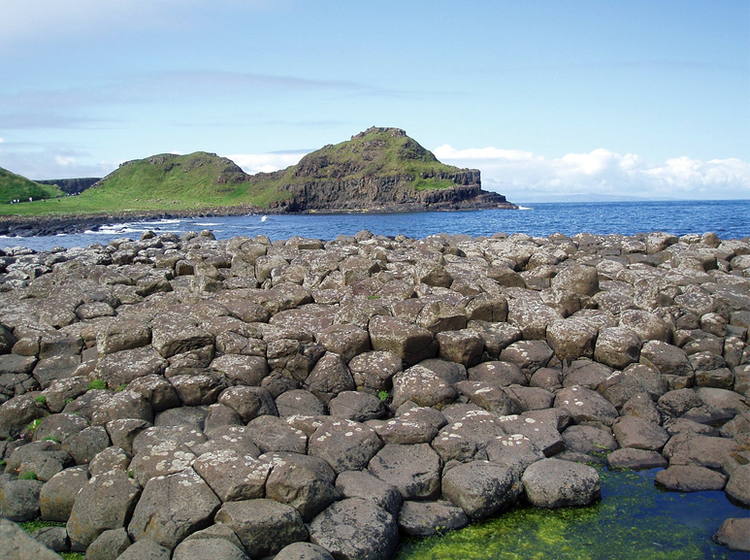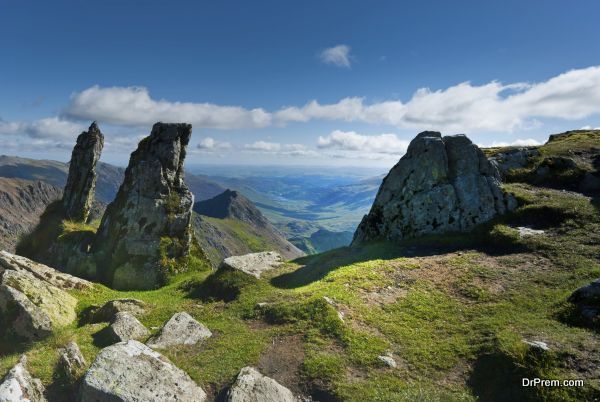Northern Ireland is known for its breath-taking scenery as well as its rich culture steeped in history and mythology. That’s why it’s the preferred location for the filming of the hit series “Game Of Thrones”.
It is a land where nature is protected and conserved, leaving the landscape nearly pristine. The visitor gets the chance to view stately mountains overlooking bodies of water, picturesque coastlines, numerous valleys and glens with rugged terrain that belong in paintings. The terrain of the region is perfect for all sorts of outdoors activities like hiking, camping and biking. That being said, a tour of Northern Ireland is incomplete without visiting the Giant’s Causeway.
The Giant’s Causeway
The most famous attraction in Northern Ireland is the Giant’s Causeway, a UNESCO world heritage site that is on the causeway coast in Co.Antrim on the North-eastern edge of the country.
The Giant’s Causeway evokes a feeling of timelessness in all who visit. The melange of ancient geological events, stark scenery and Irish mythology makes visiting the causeway feel like walking right into a fairy tale. Allen’s Tours knows the way to this enchanted place and is happy to take you there.
Geology of the Giant’s Causeway
The Causeway is a formation of around forty thousand interlocked polygonal basalt columns. The formation is flanked by a coastline of steep cliffs and the North Atlantic ocean.
The basalt columns are a result of a volcanic event that happened around sixty million years ago. Molten basalt lava forced its way to the surface where it cooled. It fractured vertically, like drying mud, to form columns. The lava also fractured horizontally in such a way that the columns have distinct layers.
The Giant’s Causeway explained in Irish mythology
The Giant’s Causeway gets its name from Irish folklore. It is said that Finn McCool, a giant, was minding his business one day when Benandonner, a Scottish giant, started hurling insults at Finn from across the Irish Sea.
Finn got angry and challenged Benandonner to a fight. He then tore large columns of rock from the coastal cliffs and anchored them in the seabed, building a causeway across the Irish sea to Staffa, Scotland where his enemy was. Finn used the causeway to get to Staffa with the intent of defending his honour. However, when Finn saw that his enemy was much bigger than him, he turned and fled to his house in Ireland, with Benandonner in pursuit.
Finn’s wife was clever and came up with a plan to save her husband. She disguised him as a baby and waited for Benandonner. When he came knocking, she welcomed him into her home and asked him to wait for her husband, who was out running errands. While he waited, Benandonner saw the “baby” and became afraid. He reasoned that the father of such a large baby must be monstrously huge.
He ran away at the first chance he got, destroying the causeway as he ran so that Staffa and the Irish coast became separated by water once more. All that was left of the causeway on the Scottish side were the basalt columns that Benandonner didn’t bother to destroy after ensuring that Finn couldn’t get to him.
Tourist facilities at the Causeway
There are many facilities for visitors of the Giant’s Causeway. The most striking is the award-winning visitor’s centre. Built of basalt and glass, the Visitors Centre blends seamlessly into the surrounding landscape. From its grass rooftop, the centre offers a panoramic view of the Giant’s Causeway and the coastline.
It also offers interactive exhibitions featuring Finn the Giant. The centre provides shuttle bus rides to the causeway as well as audio guides for use during your exploration. The centre also offers amenities like an eatery, parking, toilets and children’s changing areas.
Walks and Hikes at Giant’s Causeway
The causeway has scenic trails for hiking and walking. These trails have varying degrees of difficulty ranging from easily navigable trails that can be managed by those with impairments, to challenging trails that are perfect for physically demanding hikes.
- The most demanding trail is the 8 km long old tram track that leads to Portallintrae and the rock formations of the shepherd’s steps. The trail sits on the coastline’s high cliffs and the scenery from these vantage points are gorgeous. This trail is only for the sure-footed because the ground is uneven and slippery.
- The Runkerry circuit is a trail which also involves walking on cliff-tops with spectacular views. It is not for those who fear heights, and the cliffs’ edges must be approached with care. Parts of the trail are surfaced, while other parts have only grass and soil.
Sight-seeing at the Causeway
- The walk to the Dunseverick Castle from the visitor’s centre is around two kilometers long. It is a leisurely trail that progresses along an old tram line. Dunseverick castle is an ancient ruin that gives visitors a feel of the area’s history. The ruin is more than 1500 years old.
- From the shepherd’s steps at the cliff tops, a path descends to the base of the cliffs where the columns of the cliff-face can be properly seen. Along the descent, the Giant’s Eyes can be seen. These eyes are sockets that were formed when two basalt boulders fell out of the cliff’s face.
- There are also other interesting rock formations at the bottom of the cliffs like the giant’s shoes and the chimney stacks.
- For the wildlife enthusiasts, the causeway coast is home to many species of birds, making the area perfect for birdwatching.
See the Best Northern Ireland Has to Offer
The Giant’s Causeway tour is the perfect way to spend a day. Various tours offer packages that take care of all transportation needs, leaving the tourist free to enjoy the scenic drive along the coast and all the activities that the Causeway tour has to offer.




